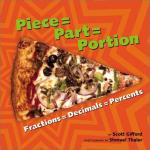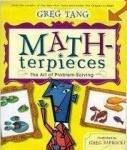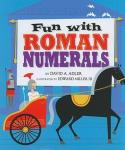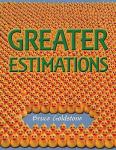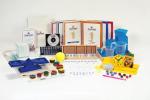Math
Piece = Part = Portion
There are lots of fraction books for kids out there with photos of every conceivable flavor of... Pizza. This book has the fractions, it has pizza, but thankfully it does not stop there! It provides a progression of various portions to a sliced—but intact—pizza representing the whole (1/1 = 1 = 100%). The connections it makes between the fractional part and its decimal and percentage representations is what makes it different, and useful. My kids have had a difficult time making this connection at home, perhaps because their own homeschool teacher suffers from the same ailment?
A Million Dots
There are indeed a million dots in the book, although the book states it would take over eleven days for the reader to actually count them! On each page one of the dot numbers is highlighted and a large illustration depicts what that number represents. For instance, dot number 265,000 represents the number of different kinds of moths and butterflies on earth, and dot number 615,100 represents the number of words in the Oxford English Dictionary.
Greater Estimations
You may have enjoyed, like we have, Great Estimations in the past. I was happy to find in the library this week a brand new sequel by the same author!

